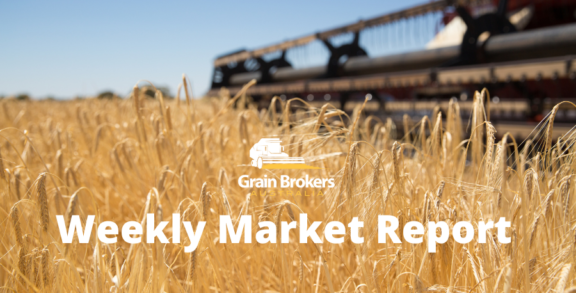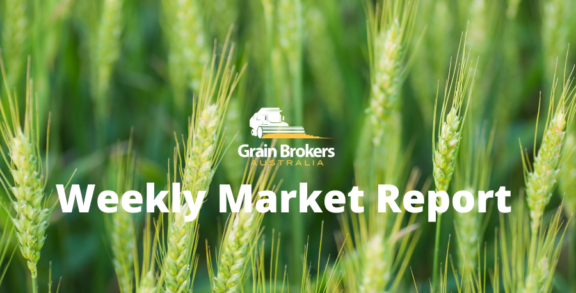
It has been quite a rough start to the year for grain markets, with key futures values down significantly since fireworks and fanfare welcomed in 2024 a couple of weeks ago, and that was compounded by the bearish global supply and demand update released by the United States Department of Agriculture last Friday.
At the close of trade last week, the front contract month for corn, soybeans and the three wheat bourses in the US were down between 3.3 per cent and 5.8 per cent, with soybeans the worst performer. On MATIF, the leading futures exchange for agricultural commodities in mainland Europe, the March milling wheat contract is down 2.9 per cent in the first twelve days of the New Year.
The January World Agricultural Supply and Demand Estimates Report threw up a few surprises, not least the significant increase in US corn yield for the 2023/24 campaign. While the harvested area was trimmed slightly compared to the December report, the 2.4 bushels per acre increase in yield to a record 177.3 bu/ac (11.13 metric tonne per hectare) caught the market by surprise. That, in turn, boosted production to a record 15.342 billion bushels (389.7 million metric tonne) and pushed projected US ending stocks for the 2023/24 season to 2.162 billion bushels (54.92mmt), the highest level in five years. Corn futures sank as a result to close Friday trade at a three-year low.
Globally, the USDA printed corn production 13.7mmt higher at 1,236.7mmt. The big movers were China, up 11.8mmt to 288.8mmt, the US, up 2.7mmt, and Brazil, down 2mmt to 127mmt. The USDA left output in Argentina, Ukraine and the European Union unchanged at 55mmt, 30.5mmt and 60.1mmt, respectively. Total global trade was decreased by 0.5mmt month-on-month with the Brazil export forecast down 1mmt to 54mmt. Expected global ending stocks are up 10mmt to 325mmt compared to 2022/23 and 25mmt higher than at the end of the 2021/22 season.
Brazil’s production remains the big unknown, with extremely hot and dry weather in October, November and December through the central and northern parts of Brazil, eroding yield potential for this season’s first corn crop. Corn and soybean production analyst Michael Cordonnier already has Brazil’s corn output 10mmt lower than the USDA at 117mmt, and he has a lower bias moving forward.
While good rains have returned to the dry areas in January, moisture deficits remain in many regions, and the glaring concern is whether the climate pattern change this month will negate the crop damage done in the last quarter of 2023. The dry weather has also delayed the soybean plant in many areas which could be problematic for the safrinha corn crop as planting will also be late, pushing crop maturity well past the normal monsoon departure date.
The soybean yield in the US was also raised in last week’s report by 0.7 bu/ac to 50.6bu/ac (3.4mt/ha), which took production 0.9 per cent higher to 4.165 billion bushels (113.4mmt), still two per cent lower than in 2022/23 due to a fall in the harvested area. The uptick in supply pushes projected 2023/24 ending stocks 14.1 per cent higher than last month to 280 million bushels (7.62mmt).
On the world stage, the USDA left total soybean production in 2023/24 unchanged at 399mmt, 6.3 per cent higher than the 375.4mmt produced in the prior season. The main change was in Brazil, where production is 4mmt lower at 157mmt but still in record territory. Even though the weather has improved in Brazil, Michael Cordonnier believes the rain has come too late for a full recovery of the earliest planted soybeans in central Brazil. Cordonnier’s estimate now sits at 151mmt, having wiped 6mmt off his forecast in the past six weeks. Last month, farmers were estimating yield losses of up to 30 per cent in the worst affected early maturing crops, and early yields support that concern.
The main compensatory revisions were the US, 1mmt higher to 113.3mmt, and Argentina, 2mmt higher at 50mmt, with some minor upward revisions to Paraguay and China helping to balance the equation. The USDA pegged global trade slightly higher at 170.9mmt, and ending stocks were unchanged at 114.6mmt. Interestingly, China’s import projection remains at 102mmt despite rumblings from Beijing of lower demand in the second half of 2023/24.
On the wheat front, the USDA released its first US winter wheat seeded area for the 2024/25 harvest, with expectations across all classes down 6.2 per cent year-on-year to 13.93 million hectares. In Kansas and Texas, the two largest winter wheat-producing states, reported plantings are down seven and eight per cent, respectively. Record low planted areas are forecast for Michigan and Utah.
The hard red winter wheat area is down five per cent compared to the previous season to 9.71 million hectares. The largest decreases in planted area are seen in Kansas and Texas while Montana is expected to have a modest increase. The soft red winter wheat area is forecast to be 13 per cent lower at 2.78 million hectares with the largest decrease expected in Michigan and the biggest increase projected for Pennsylvania. The USDA expects the white winter wheat area to be five per cent lower than the area planted for the 2023/24 harvest.
Internationally, the USDA increased 2023/24 season wheat production by 1.9mmt to 784.9mmt compared to its December projections. The two movers were Russia and Ukraine, where production was increased by 1mmt to 91mmt, and 0.9mmt to 23.4mmt, respectively. With the southern hemisphere harvests winding up, the last pieces of the 2023/24 production puzzle have been finalised. The USDA left the Australian wheat crop unchanged at 25.5mmt. The crop in Argentina appears to have stabilised with the USDA number of 15mmt largely in line with local estimates.
On the trade side of the 2023/24 ledger, global wheat exports were increased by 2.3mmt to 209.5mmt, almost 10mmt lower than the 2022/23 season. Amongst the major exporters, Argentina was unchanged at 10mmt, Australia was up by 0.5mmt to 19mmt, as was Canada to 24mmt, the EU was down 1mmt to 36.5mmt, Russia was up 1mmt to a record 51mmt, and Ukraine was increased by 1.5mmt to 14mmt, following the success of the new shipping corridor.
Call your local Grain Brokers Australia representative on 1300 946 544 to discuss your grain marketing needs.





